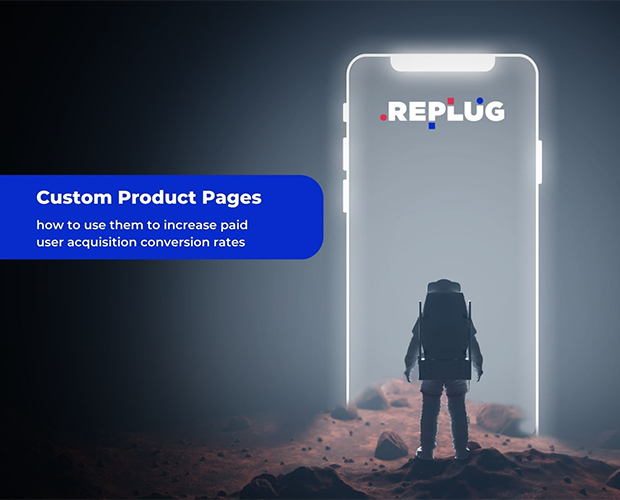In part 1 of a 2-parter, Stephen Lee, Director of Marketing at Finnish mobile software company, Max Rumpus, seen here engaging in what we can only assume is a popular Finnish pastime, examines what makes mobile different as a marketing channel. In part two, published tomorrow, his colleague, Mika Huhtamki, looks at the mobile ecosystem
 We have seen so many people who want to treat mobile the same as other medium, thereby missing the great opportunities mobile has by virtue of being different. The mobile medium has a personality of its own, but the first mistake people are making with mobile is to say: Lets do the same thing, in mobile. In truth, to make the most out of mobile as a channel for marketing, we need to take advantage of the things that mobile does differently, and we need to embrace the fact that mobile has its own personality that brings the most value when it is understood and respected. Forcing mobile to perform under the same rules that all the other channels operate under limits the value and capabilities of this highly personal form of communication.
We have seen so many people who want to treat mobile the same as other medium, thereby missing the great opportunities mobile has by virtue of being different. The mobile medium has a personality of its own, but the first mistake people are making with mobile is to say: Lets do the same thing, in mobile. In truth, to make the most out of mobile as a channel for marketing, we need to take advantage of the things that mobile does differently, and we need to embrace the fact that mobile has its own personality that brings the most value when it is understood and respected. Forcing mobile to perform under the same rules that all the other channels operate under limits the value and capabilities of this highly personal form of communication.
Mobile is personal
Media channels such as TV, print, and the Internet are very
public forms of communication. Everyone can see them, yet in most
cases, we do not feel like they are invading our private space. So far,
most users and designers have been thinking of mobile in very public
communication terms, but in fact, it is really one of the most
individual and personal mass communication channels available.
This
comes from the fact that the mobile device is a personal item, like a
watch or a necklace, that you do not share with others. This personal
tool is part of peoples everyday life. It goes with them everywhere,
and it is customised to reflect their personal values, with things like
ringtones, wallpapers and covers.
Getting
a message to a mobile is like going to visit a person's home. When
visiting friends, people obey the rules of the house. The same ethos
should be applied when entering someones personal mobile space.
This personality trait of mobile offers great opportunities for
direct dialogue, but also carries the risk of accidentally entering too
deep into a persons private space, creating subsequent resistance and
permanent rejection.
When creating concepts for mobile
communication, the thought process should always start from the
receiver's point of view and the receiver's willingness to receive the
offered message. The personal nature of the medium does not allow for
concepts like spamming or unsolicited messages.
Without
respect for the mobile channel's unique personality, this new medium,
this new opportunity, becomes unusable. In short, this means that
whatever is created for the end-user in the mobile medium must provide
an unprecedented amount of value to the user, while still achieving its
communication goal.
Rich but simple
If we assume that the individuals consent
to receive a message is there, the next personality trait of mobile to
consider is simplicity. Simplicity is a key and differentiating factor
from computer or desktop Web services. It must be considered from all
aspects of creation, from design to delivery. Simplicity does not mean
that mobile marketing communications can not have rich elements like
colour, animation, interactivity and sound. But the experience must be
easy for the user to take part in, while delivering a clear message.
Mobile
devices are tied by the ropes of limited user interface, handset
capabilities and data transfer speeds. In comparison to the desktop
world, there is a lot of delay, and operations like additional requests
built into the handset reduce the consumers willingness to continue,
and receive the message.
So things that may sound nice, easy and feasible on paper, may end up
being complicated and confusing when targeted at the consumer. Overuse
or misuse of features like animation, excessive content updating or
even a confusing structure, can hide the message and lead to a poor
user experience.
So
often, creators are blinded by what is possible with any medium.
Everyone has seen websites full of unnecessary animations and other
clutter. Mobile is the same, but in the mobile environment, the
problems are exacerbated by the constraints of the device and
networks. The solution is to revisit the whole process, from content
creation, to delivery, to prototyping and concept development, in order
to make the right choices, so that the end result is simple and
enjoyable for the user, while still maintaining its richness.
Make the most of mobile's unique personality
To make the most of mobiles personality, marketers need to
celebrate the things that mobile does differently, while remembering
that great mobile marketing concepts can also work in harmony with, and
enhance, other channels. They minimise duplication and add value at a
very personal level. All of this is achieved through well thought-out
concept design and, most importantly, by understanding what is of real
value to the end user.
To provide a balanced experience, concept creators and
visionaries should also have a basic non-technical understanding of the
mobile ecosystem. In Part II, we look at this in more detail, examining
what you need to know when designing rich marketing concepts that use
the mobile channel.
Max Rumpus is a Finnish software company. It started out helping
clients create content-rich mobile marketing publications using its Maxdox Mobile Publisher software. Today, it sells this software to companies in the business of creating mobile marketing content.
.png)






